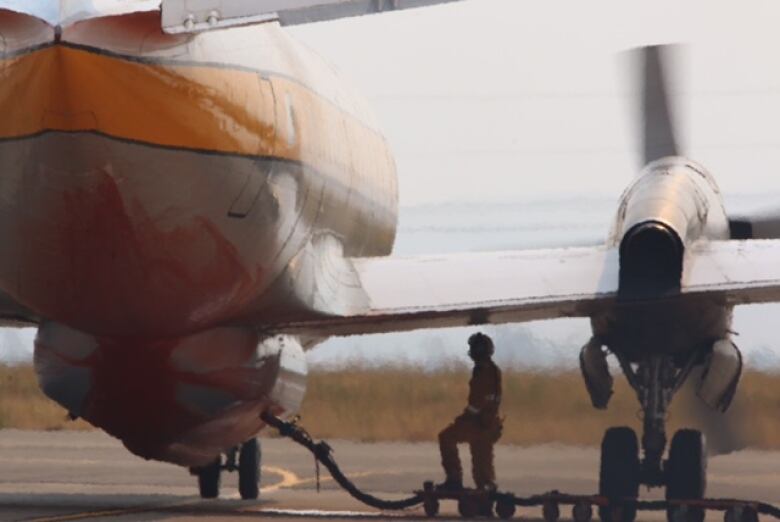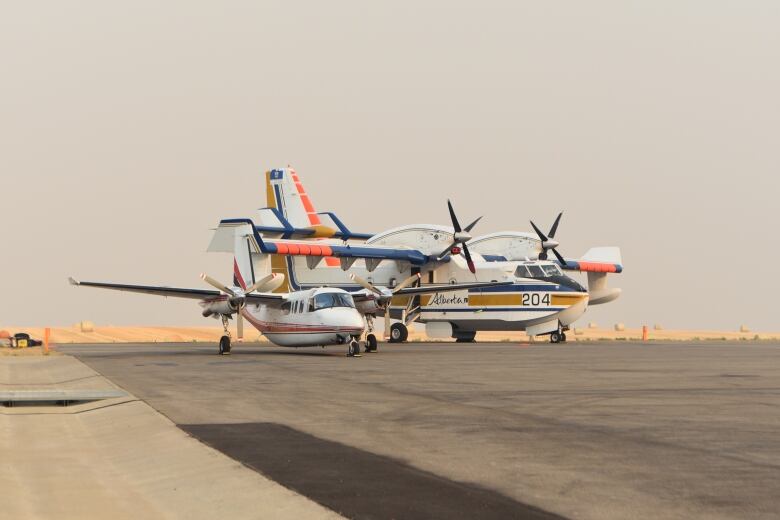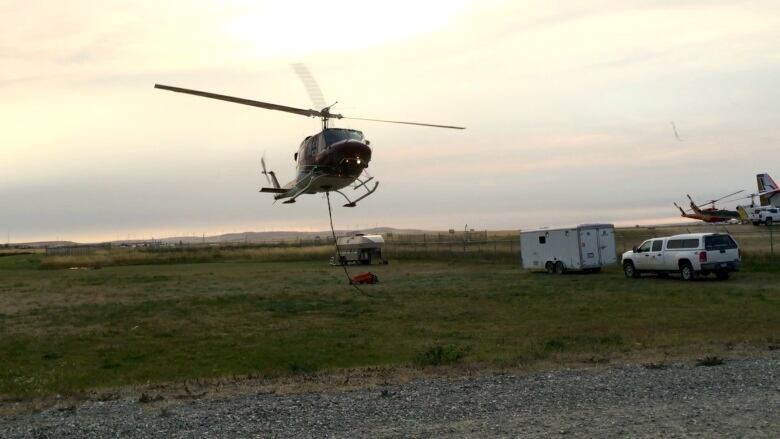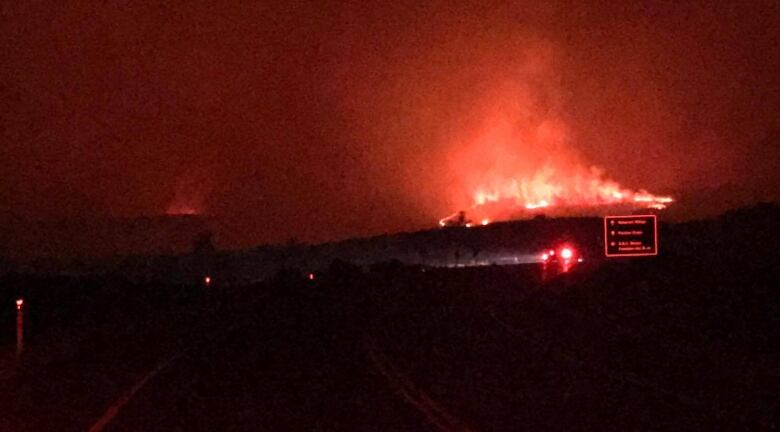Water bombers back in the skies fighting 'Goliath of a fire' in Waterton Lakes National Park
High winds and plenty of smoke stopped air crews from attacking the blaze for most of Monday
Aerial firefighting crews are once again attackingthe Kenow wildfire near the Waterton townsite after poor weather conditions kept aircraft grounded for most of Monday.
"Planes were going up and down 400 feet on their own, and when you're 200 feet off the trees, that's not good," said Mark Missal, air attack officersupervising the air tanker operations inWaterton.
Missalsaid windson Monday werereported at 92 kilometresan hour, gusting to 151 km/h.
Winds were so strong on Sunday, Missal said, hehit his head on the roof of an aircraft while wearing four seatbelts.
"And everything in the back of the plane is blown all over the place even though it's strapped down," he said."And we're just going, 'this is not worth it, someone's going to get hurt.'"

Pat Stier, MLA for Livingston-Macleod, which includes Waterton and Pincher Creek, said he has been monitoring the weather around Waterton for weeks and the blowing winds have been a cause for concern.
"After all, what we've got here is a Goliath of a fire with a wind that is just so, so fast, and it's just fanning the flames and moving this thing a lot faster than anyone predicted."
Smoke from the roughly 20,000-hectareKenow wildfire, which crossed from B.C. into Alberta on Monday, limited visibility andkept crews grounded for most of Sunday and Monday,Missalsaid.
"So we can take off easily enough but if we can't see where we're coming down, we won't do it.
And we want to make sure that aircraft, once they drop [water], have a long, safe exit out so they can go back and get a reload."
In anews conference on Tuesday, Premier Rachel Notley said efforts to control the fire'seastern border "are likely to bemore successful today" now thatairtankersand helicopters are back in the fight.
"That work isunderway," Notely said."The wind dynamics will determine whether the eastern border can be heldlater today.Additional evacuation alerts may be necessary as the situation develops."
Notley said there are nine helicopters and 14 air tankers assisting135 firefighters on the ground inWaterton. Another125 firefighters and23 helicopters areon standby.
'They were getting pounded'
Two of the province's eight air tanker groups are assisting in Waterton, Missal said.
Missal and one other air attack officer aresupervising 12 pilots, fiveaircraft maintenance engineers and lots of support staffmaintaining a fleet of fixed-wing aircraft and helicopters.

A smaller plane, which Missal calls "the bird dog,"willscout ahead and monitor flying conditionsbefore the largerCL-215water bombers andL-188Electra airtankers go to work.
Missalsaid the Electra can carry a 9,500-litre payload, while the CL-215 can drop more than 4,500 litres in under 12 seconds.

Helicopters equipped with water buckets have been able to fly more than any of the other air resources, but even they've been grounded on and off through the past few days, Missal said.
"I mean, they'revery slow, but [wind is]very hard on a helicopter in terms of maintenance. And yes, they were getting pounded pretty good, too."
Missal said some of the pilots on the aerial team travelled from Abbotsford, B.C., to help fight the Kenow fire, while some are captains with major commercial airlines.
"They come back to do this type of work because nobody in the world gets to fly a plane like this,"Missal said.
'Mother nature wanted the burn'
Although air tankers don't put out fires,aerial crews work on suppression and supporting firefighters on the ground to"buy them time,"Missal said.
Air tankers drop water,foam and a fire-retardant substance pilots call"red mud," which stops fire from spreading by trapping flammable gasses inside wood andcombustible material.

"You'll see flame come up to the retardant and then stop, and usually that retardant will be there for a long time,"Missal said. "So unlike water and foam that evaporates, the retardant is longterm."
Despite the best efforts of ground crews and the aerial team, conditions in the regionwere perfect fora wildfire to spread, according to Missal.
"Mother nature wanted the burnthis year and there wasn't anything anybody could do about it," he said.
With files from Sarah Lawrynuik













_(720p).jpg)


 OFFICIAL HD MUSIC VIDEO.jpg)
.jpg)



























































































